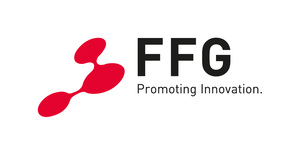Modern product development is based on virtual prototyping which consists of computer-aided design (CAD) and a subsequent assessment by means of numerical simulation. In turn, the analysis of the simulation results gives rise to an incremental improvement of the design such as a geometry adjustment. Via this optimisation cycle, products are designed and tested virtually without the need of costly physical prototypes and experiments. Even though information can be exchanged between the involved software systems, the correct interpretation and processing of the data remains an open issue. In order to guarantee a thorough, efficient and complete digitalisation in modern product development, the communication barriers inherent to the different computer programs have to be removed.
The main object of VEGA is the seamless integration of CAD and numerical simulation in order to achieve a significant reduction in the cost of virtual prototyping. To this end, the incompatibilities of these two constituents have to be overcome. This requires an amplification of existing CAD descriptions as much as a profound modification of the simulation methods.
VEGA targets an enrichment of CAD models in view of a direct processability by the subsequent simulation. The data exchange is realised by means of a platformindependent and standardised data format. Moreover, existing simulation methods will be modified with the aim of incorporating lossless geometry descriptions. The notorious obstacles of non-watertight geometries and non-conforming parameterisations of CAD-surfaces will be specifically addressed. In order to close the cycle, the simulation results will be passed back to the CAD model. The latter allows not only for a visualisation of these data but also for an automated optimisation of the overall design process.
VEGA provides algorithms for the automated processing of CAD geometries, the communication between design software and simulation kernel is enabled via the STEP format (Standard for Product Data Exchange). On the other hand, a discontinuous Galerkin boundary element method will be developed that allows for non-conforming geometry parameterisations. In order to validate the applicability of the proposed techniques, the analysis of electromagnetic devices is chosen as specific use case and the developments culminate in a representative plugin for Rhino3D.

